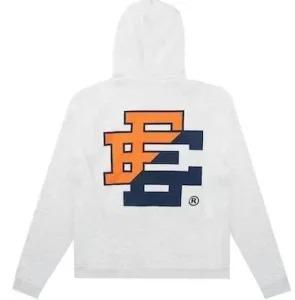The hoodie has become an iconic garment, celebrated for its comfort and versatility. But beyond the casual allure of this wardrobe staple lies a more complex story—one of environmental impact. The materials, production methods, and lifecycle of a hoodie can contribute significantly to issues like water waste, pollution, and carbon emissions. Recognizing these factors opens a path to sustainable choices, making hoodies not only stylish but responsible.
Cost of Fast Fashion Hoodies:
The rise of fast fashion has led to mass production of clothing, including hoodies, at an unprecedented scale. Often crafted from synthetic materials like polyester, which are petroleum-based, many ericemanul.com contribute to non-biodegradable waste and pollution. The push for rapid production also involves excessive water use, harmful dyes, and frequent shipping. This creates a high environmental footprint, emphasizing the need for sustainable options that prioritize eco-friendly practices.
Building Blocks of Sustainable Hoodies:
Sustainable hoodie brands are turning to eco-friendly materials like organic cotton, bamboo, hemp, and recycled polyester. Organic cotton, for instance, is grown without harmful pesticides, reducing soil and water contamination. Recycling polyester repurposes existing plastic waste, diverting it from landfills and oceans. Bamboo and hemp, both rapidly renewable, require minimal water and grow without pesticides, making them ideal for earth-conscious consumers.
Benefits of Ethical Production Practices:
Sustainable yeezy-gap.com brands often focus not only on materials but also on ethical production. This includes fair wages, safe working conditions, and reduced waste. Many companies are shifting to small-batch production to minimize excess, while some invest in factories that recycle water and avoid toxic chemicals. When you purchase from a brand that values ethics, you contribute to fairer, more sustainable fashion practices, creating a positive ripple effect across the industry.
How Longevity Supports Sustainability:
One of the simplest yet most impactful steps toward sustainability is prioritizing quality over quantity. Hoodies designed with durability in mind are made to withstand repeated wear and washing, often from sturdier materials and meticulous craftsmanship. These high-quality garments last longer, reducing the frequency of replacements and overall demand, which helps to minimize waste. Choosing well-made hoodies reduces the cycle of fast fashion and encourages a more sustainable wardrobe.
Recycled and Upcycled Hoodies:
Innovative brands are exploring recycled and upcycled materials to create stylish hoodies with reduced environmental impact. Recycled namedcollective-uk.com use existing fabric, while upcycled designs creatively repurpose textile scraps, preventing them from ending up in landfills. These methods not only give new life to materials but also require less water and energy compared to producing brand-new fabric. By supporting these alternatives, consumers drive the demand for resourcefulness and sustainability.
Sustainable Hoodie Brands:
Shopping from local or small-scale sustainable hoodie brands can further reduce environmental impact. Local production minimizes transportation emissions and often involves more transparent, accountable practices. Smaller brands may prioritize sustainable materials, limit waste, and produce in limited quantities, avoiding the overstock issues common in fast fashion. Supporting these businesses empowers them to grow, making sustainable options more accessible for everyone.
Embracing Minimalism:
An essential aspect of sustainable fashion is adopting a minimalist mindset—focusing on quality over quantity. By carefully selecting a few versatile, well-made hoodies, you can build a wardrobe that’s functional and eco-conscious. A minimalist approach not only reduces waste but encourages thoughtful consumption, where each piece is chosen for its durability, style, and sustainability. This shift toward mindful ownership directly supports environmental sustainability.
How Small Choices Drive Big Change:
Making sustainable choices, even with something as simple as a hoodie, contributes to a larger movement toward environmentally responsible fashion. Whether by choosing organic materials, supporting ethical brands, or embracing durability, each small decision adds up. Together, these choices influence the fashion industry to value sustainability over speed, contributing to a healthier planet.
Conclusion:
As we look toward a future that values both style and environmental consciousness, the humble hoodie can become a symbol of positive change. By making informed choices—selecting eco-friendly materials, supporting ethical production, and embracing quality over quantity—we can reduce our impact on the planet. In a world where every choice matters, sustainable hoodies offer a path to style that cares for the environment, making fashion a force for good.



